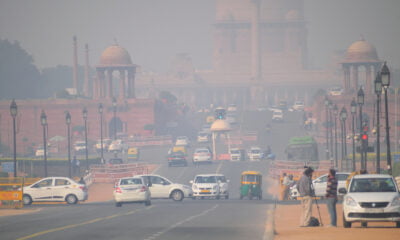

Economy
On this day in 1991: BCCI closure sends shockwaves through financial community
Twenty-two years ago today, after the Bank of England’s Operation Sandstorm inquiry uncovered “widespread fraud and manipulation”, the Bank of Credit and Commerce International (BCCI) was forced to close. The decision had serious consequences for the taxpayer and, until the financial crisis, was arguably the biggest banking scandal in history.
By 1991, BCCI had grown to an unmanageable size. It was shut down after accusations of a whole host of misdemeanours, including fraud, arms trafficking, prostitution, bribery, spying, money laundering, kidnapping, and according to some, murder. In the months and years after its closure, the unsettling details began to emerge about how the bank was being run.
But a few people saw it coming.
Arguably the first sign that something less than respectable was rumbling away behind the counter at the bank appeared in 1982. An internal memo, sent to Bank of England staff, said the BCCI was “on its way to becoming the financial equivalent of the SS Titanic!”
Its rapid expansion in the 70s had unnerved the Bank of England, which held off giving it deposit-making status until 1980. Two years earlier in 1978, amid its legal wrangling with officials on Threadneedle Street, BCCI’s Pakistani founder Agha Hasan Abedi told Euromoney, “The Bank of England probably hasn’t given permission because of the atmosphere surrounding the BCCI and the propaganda that has been spread about us […] It is not only the Bank of England that is against us, but the Club.”
In 1985, auditor Price Waterhouse (before its 1998 merger with Coopers & Lybrand, when it became PricewaterhouseCoopers) was tasked to investigate losses at BCCI.
A US branch of BCCI was shut down in 1988 amid money laundering claims. Then, in 1990, another Price Waterhouse investigation uncovered financial losses straying into the hundreds of millions of pounds. Serious irregularities and illegalities began to unravel. This was not a one-off; this was dangerous banking embedded at the very core.
Accusations of fraud, manipulation and money laundering were rife. Price Waterhouse said that BCCI needed a major rescue. When it went bust in 1991, it had debts stretching into the billions.
Until the financial crisis of 2007 and 2008, Lehman’s collapse, and the Libor manipulation more recently, the BCCI scandal was the biggest crisis witnessed in banking across the world. But even compared to the events of the last six years, its sheer scale of corruption and illegal activity is unmatched. Writing in Time magazine in the months after the bank’s closure, Jonathan Beaty and SC Gwynne said, “Never has a single scandal involved so much money, so many nations or so many prominent people.”
Around 28 local councils and thousands of depositors in the UK lost millions because of its collapse. Colin Jones, then-leader of Bury council which had lost £6.5m in the closure, told the BBC at the time, “We don’t know where we stand.”
Meanwhile, the Bank of England was sued by creditors, who alleged it knew of BCCI’s illegal workings, to the tune of £1 billion. Accountancy firm Deloitte & Touche described the Bank’s role as “misfeasance” – a transgression or a violation of a law or a duty or moral principle.
At its peak, BCCI ran over 400 branches in over 70 countries. Its headquarters were split between Karachi and London. The career of its Pakistani founder Abedi spanned across six decades. He was often famed for his philanthropy, initially setting up BCCI as a “bank focused on the third world”, according to the Guardian.
However, a description of him from a former colleague tells a different story. Massihur Rahman, one-time chief financial officer at BCCI, said in a 1991 interview, “I remember looking into his eyes and seeing God and the Devil balanced equally in them.”
While a number of BCCI officials were jailed in the aftermath of the bank’s closure, Abedi himself died before he could face charges. The legal battle that ensued included a 119-day opening speech by Nicholas Stadlen QC in 2005, and it wasn’t until 2012 that the case was finally closed.
The collapse of US investment bank Lehmans in 2008 sent similar shockwaves around the globe, and had even greater implications. The unravelling of Lehmans’ deals still takes place today. More recently, HSBC has become embroiled in a money laundering scandal and the likes of Barclays, the Royal Bank of Scotland and UBS have been fined for their involvement in rigging Libor – the rate at which banks lend to each other.
These events, despite happening in the shadow of the BCCI saga, suggest global finance has not learnt its lesson. It will continue on its irresponsible and unsustainable path for as long as there is profit in that.
But if these events have proven anything, it’s that ultimately, these routes are full of legal obstacles. And eventually, even the biggest banks will be found out.
Further reading:
High street banks still susceptible to money laundering, claims regulator
What’s gone wrong with finance?
‘Shocking and widespread malpractice’ should land bankers in jail, says commission































